Food Waste Reduction and Recovery
|
Food Banks and Rescue Programs Food Donation: Liability and Food Safety |
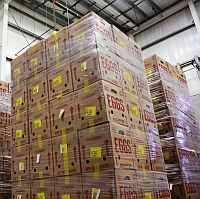 |
Preventing Wasted Food at Food Businesses |
In 2024, Governor Ned Lamont has declared April 1st-April 7th to be Food Waste Prevention Week as part of a National food waste prevention movement.
Legal Fact Sheets
- Connecticut Food Donation: Date Labeling Laws
- Connecticut Food Donation: Liability Protections
- Connecticut Food Donation: Tax Incentives for Businesses
- Connecticut Food Donation: Feeding Food Scraps to Animals
Why Does Food Recovery Matter?
The single largest component of solid waste sent to incinerators and landfills is food waste. According to the EPA food waste comprised 21.3% of total U.S. Municipal Solid Waste generated in the United States in 2011 - that’s 36.31 million tons of wasted food. And for all that food waste generated, just 3.9% was diverted from landfills, or recovered.
Food waste represents inefficiencies in the food system. A 2012 report by the Natural Resources Defense Council found that up to 40% of food is wasted in the United States, accounting for losses at every step of the supply chain: production, storage, transportation, processing, retail, and consumer losses. When food is wasted, valuable energy, water and land resources are also wasted. Furthermore, combustion of food waste in waste-to-energy plants and/or decomposition of food waste in landfills contribute to pollution.
Wasting food also links with social issues. We are experiencing a paradox between food waste and hunger: Large quantities of edible food are being wasted while we have residents experiencing food insecurity. Food insecurity is when people do not have access to enough nutritious food for an active, healthy lifestyle. According to a 2012 study by the University of Connecticut, 12.7 percent of Connecticut residents were living in households deemed food insecure from 2008 to 2010.
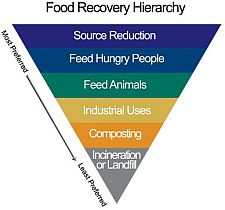
EPA Food Recovery Hierarchy
The EPA Food Recovery Hierarchy provides a framework for the best way to make the most of excess food. Where reducing food waste at the source is inadequate, the next best thing is to divert edible or salvageable food to food banks and food rescue programs. When feeding people is not possible, then feeding animals is the next best option, followed by industrial uses then composting, and finally, landfilling or incineration as the last resort.
Donating Food
Food Banks and Rescue Programs
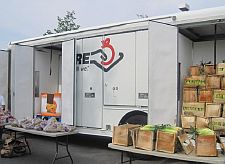
Connecticut is working to end hunger and reduce waste. Food banks and rescue programs serve community centers, soup kitchens, food pantries, shelters, senior programs, and child-care centers by providing them with food.
Food Banks
There are two food banks in Connecticut. They are community-based, professional organizations that collect food from a variety of sources, warehouse it, and then distribute it to food pantries, soup kitchens, shelters, and individuals through mobile distribution trucks. Fresh food now makes up about 50% of the inventory in CT’s food banks. Before organizing a community food drive, get in touch with your local food bank.
- Foodshare (Hartford and Tolland counties)
- Connecticut Food Bank (Fairfield, Litchfield, Middlesex, New Haven, New London and Windham counties)
Food Rescue Programs
Other types of food rescue programs often focus on recovering perishable and prepared foods and distribute food directly to agencies that serve hungry people. Food rescue groups operate on a smaller scale than food banks, relying mostly on volunteers who deliver food directly from a retailer to an organization such as a food pantry. Rescue groups can be found in communities and universities across the country. Some examples in and near Connecticut include:
- Food Rescue US (Fairfield, New Haven and Litchfield counties) Food Rescue US recovers and distributes fresh foods from supermarkets as well as surplus food from restaurant kitchens.
- Rock and Wrap it Up! (based in NYC, works nationally) Boxes up and distributes prepared meals following concerts, sporting events and from hotels and schools. RWU also collects and distributes toiletries and cleaning products from hotels and other lodging facilities.
There are also programs that help gardeners donate their excess produce from home to local food pantries such as:
- Plant a Row A program of the Connecticut Food Bank that encourages local gardeners to plant an extra row of produce to donate.
- Ample Harvest Helping local gardeners share their excess harvest.
Am I Liable if I Donate Food?In 2012, Connecticut passed Public Act 12-123 to protect people that donate food from potential legal liability incorporated as Connecticut General Statutes ("CGS") Section 52-557l. Legal Fact Sheets:
On October 1, 1996, President Clinton signed this act to encourage donation of food and grocery products to non-profit organizations for distribution to individuals in need. The Federal Bill Emerson Good Samaritan Food Donation Act
What About Food Safety? In 2000 the Food Recovery Committee of the Conference for Food Protection created comprehensive guidelines for recovering perishable products safely. These guidelines mirror the grocery industry handling and storage guidelines. The U.S. Food and Drug Administration has developed federal regulations (21 CFR 110) on Good Manufacturing Practice in Manufacturing, Packing, or Holding Human Food. Legal Fact Sheet |
Preventing Wasted Food at Home
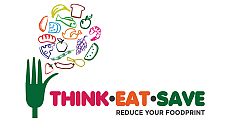
Wasted food at home can be avoided. Currently, American families throw out approximately 25 percent of the food and beverages we buy, adding up to a cost of $1,365 to $2,275 a year for the average family of four. (Source: "American Wasteland: How America Throws Away Nearly Half of Its Food" by Jonathan Bloom.)
Simple tips to reduce waste at home:
- Plan before you shop. Plan meals and make a shopping list before you head to the store, and check your fridge and pantry to assess what you have before you buy more. Websites such as Recipe Key generate recipes based on items already in your pantry.
- Don't shop on an empty stomach. Stick to your list when you are at the store. Shopping when hungry makes it more likely that you will be tempted to buy unhealthy foods and to buy more food than you need.
- Downsize your fridge. Having a large refrigerator encourages clutter. Keep food organized and visible to help reduce wasting forgotten items. Consider transitioning to a smaller fridge—you could save on energy costs too.
- Start small. Try not to serve yourself too much to start with, and then return for seconds if you are still hungry. The average dinner plate has increased in size 36% since 1960. Larger plates make correct portions seem smaller. Read more about the Small Plate Movement.
- Be a conscious cook. The Love Food Hate Waste serving size calculator suggests how much food you need to get your serving sizes right for each meal – and to keep food out of the trash.
- Eat your leftovers. Ask the restaurant to bag your leftovers, and freeze them if you don’t have room in the fridge. With increasing portion sizes, restaurant plates can often make for two or more meals. According the Natural Resources Defense Council, only about half of Americans take leftovers home.
- Understand date labeling. The federal government does not regulate “Sell-by” and “Use-by” dates. Such terms are not an indicator of food safety, but rather of a manufacturer’s suggestion for “peak quality.” Understanding that most foods can be consumed after these dates can reduce waste at home. (See fact sheet on Connecticut Food Donation: Date Labeling Laws.)
- Compost food scraps. Composting food scraps can reduce your impact on the climate and recycle the food’s nutrients to make rich soil. View the DEEP’s free video download "Home Composting - Turning Your Spoils to Soil," DEEP's "Composting Has A-Peel" flyer, and DEEP's home composting web page for tips on how to compost at home.
- Give from your garden. Do you garden? Plant a Row and Ample Harvest connect gardeners with food pantries so that they can donate their excess produce to those in need.
| “The most remarkable thing about my mother is that for thirty years she served the family nothing but leftovers. The original meal has never been found.” —Calvin Trillin |
Preventing Wasted Food at School (K-12 & Higher Education)
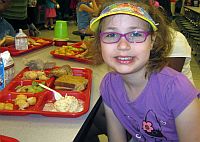 As of April 2013, twenty-three New England Colleges and Universities have joined the EPA Food Recovery Challenge, including some from Connecticut. Consider joining the EPA Food Recovery Challenge and receive resources and tools to track your food waste recovery efforts.
As of April 2013, twenty-three New England Colleges and Universities have joined the EPA Food Recovery Challenge, including some from Connecticut. Consider joining the EPA Food Recovery Challenge and receive resources and tools to track your food waste recovery efforts.
- The Food Recovery Network unites students at colleges and universities to fight food waste and hunger by recovering surplus perishable food from college campuses and surrounding communities and donating it to people in need.
- CT Green LEAF Schools
- The Campus Kitchens Project partners with high schools, colleges and universities “to share on-campus kitchen space, recover food from cafeterias and engage students as volunteers who prepare and deliver meals to the community,” bringing students closer to their food and teaching food recovery.
- After you’ve exhausted all your options for reducing food waste, recovering edible food on-site or through donations, consider options for recycling your food scraps:
For information on university composting, check out the “Composting and Organics Recycling” section of DEEP's web page on recycling resources for colleges and universities.
Preventing Wasted Food at Food Businesses
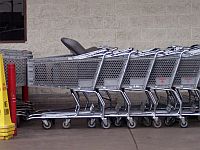 As a commercial food business owner or manager you likely know how to try and reduce food losses – because food losses often mean financial losses. Both the EPA and DEEP have food waste reduction resources for businesses, and Lean Path maintains food industry blog on food waste prevention. A study by The Food Waste Reduction Alliance found food waste at the retail level tends to consist of finished products more suitable for donation, while food waste generated through manufacturing tends to be unused ingredients, unfinished product or trimmings, peels and other unavoidable food waste more conducive to animal feed, composting or anaerobic digestion.
As a commercial food business owner or manager you likely know how to try and reduce food losses – because food losses often mean financial losses. Both the EPA and DEEP have food waste reduction resources for businesses, and Lean Path maintains food industry blog on food waste prevention. A study by The Food Waste Reduction Alliance found food waste at the retail level tends to consist of finished products more suitable for donation, while food waste generated through manufacturing tends to be unused ingredients, unfinished product or trimmings, peels and other unavoidable food waste more conducive to animal feed, composting or anaerobic digestion.
Why Donate Food?
There are several reasons why it makes sense for your business to donate food:
- Tax deduction - The 1976 Tax Reform Act allows companies to deduct costs associated with donating food to nonprofit organizations.
- Cost savings - Reducing the amount you throw away is reflected in your disposal costs.
- Inventory control - Food donations help reduce surplus of hard-to-move inventory that cannot be sold.
- Sustainability - Support the local community, reduce waste and recover materials for reuse.
Simple tips to reduce wasted food at food businesses:
Restaurants
- Follow the guidance in the National Restaurant Association's food donation guide.
- Use EPA's Waste Assessment Tools and Guide for Food Services and Restaurants on Reducing Wasted Food & Packaging.
- Buy only what you need. Using Phood Tracking or investing in a food waste prevention tracking system such as LeanPath can help your restaurant or cafeteria manage its pre-consumer (kitchen) waste and adjust purchasing and portioning accordingly, resulting in savings from over-ordering, kitchen labor, and waste management expenses.
- Prepared too much? If you prepared too much food for your kitchen or event, donating prepared foods (such as a tray of lasagna, baskets of fruit or loaves of bread) can all be donated to local food banks or soup kitchens. See above to learn more about Good Samaritan law and contact your local food bank for options to donating.
- Stock it. onion skins, pepper scraps, potato peels. These may sound like food scraps, but have you thought about making homemade stock?
- Leftovers. Use your creativity; last night’s carrots can be tomorrow’s carrot soup!
- After you’ve exhausted all your options for reducing food waste, recovering edible food on-site or through donations, consider options for recycling your food scraps. Contact local animal farmers to assess their interest in obtaining it for feed, or consider composting it either on site or at a commercial facility that is permitted to take food residuals.
|
If we could recover just 5 percent of the food wasted each year, we could help feed 14 million people. With the help of grocery stores and restaurants, we can provide much-needed food to day-care centers, programs for the homeless, women’s shelters and more. |
Food Retailers/Wholesalers
Grocery stores, whether they are large corporations or independently operated should develop relationships with local food banks. Below are resources to help you learn the how’s and whys of donating food, including expired, distressed, surplus and unsalable foods.
- Food Donation: A "How-To" for Food Retailers and the Food Service Industry - EPA Sustainable Materials Management Webinar Slides. This webinar included three topics covering Reducing Our Poverty Footprint, Store Donation Program, and Prepared Food Donations.
- Become a Product Partner (Feeding America)
- Food Waste Reduction Alliance (Grocery Manufacturers Association, the Food Marketing Institute and the National Restaurant Association)
- Grocery Stores and Food Drives (Feeding America)
Food Manufacturers
Is your industrial food waste by-product a possible feedstock for other manufacturers? Could your by-product be used in the production of animal feed or other product? Depending on the type of by-products you generate, consider finding a company that makes pet food or other commercial animal feed. There also may be other human food products that can be manufactured from by-products. Consider joining and/or using regional on-line reuse and marketing portals such as the ReUse Marketplace . The website Alibaba is a business to business service. It puts manufacturers in touch with suppliers in touch with shipping companies, etc.
There are some piggeries that will accept food waste for direct feeding to animals. But, because swine are amplifiers of foot & mouth disease which can spread quickly to other animals, the feeding of certain foods (namely meats and food that has come into contact with meat) is regulated by the US Department of Agriculture and must be cooked by the farmer prior to feeding. "Garbage Feeders" as defined by CGS Sec 22-320a must be registered by the CT Dept. of Agriculture and licensed by the U.S. Dept. of Agriculture. To find piggeries in CT that are licensed to feed "Garbage" visit the State of CT eLicensing website and from the drop-down menu choose the License Type "Swine Garbage Feeders", then click on "search". Any questions about providing food residuals to animal farmers should be directed to the CT Dept. of Agriculture Animal Health Division.
Your business may find more options by partnering with an organics recycler that composts food residuals or operates an anaerobic digestion facility.
Join the EPA Food Recovery Challenge
 How much of your food and money are you literally throwing away? The Food Recovery Challenge asks businesses and organizations to reduce as much of their food waste as possible – saving money, helping communities, and protecting the environment. The Challenge is part of the EPA’s Sustainable Materials Management Program, which seeks to reduce the environmental impact of materials through their entire life cycle, including how they are extracted, manufactured, distributed, used, reused, recycled, and disposed. Any business or organization can participate in the Food Recovery Challenge through prevention, donation and recycling. Join the Food Recovery Challenge Now! CT DEEP has joined this challenge as an endorser.
How much of your food and money are you literally throwing away? The Food Recovery Challenge asks businesses and organizations to reduce as much of their food waste as possible – saving money, helping communities, and protecting the environment. The Challenge is part of the EPA’s Sustainable Materials Management Program, which seeks to reduce the environmental impact of materials through their entire life cycle, including how they are extracted, manufactured, distributed, used, reused, recycled, and disposed. Any business or organization can participate in the Food Recovery Challenge through prevention, donation and recycling. Join the Food Recovery Challenge Now! CT DEEP has joined this challenge as an endorser.
Join the U.S. Food Waste Challenge
 The goal of the U.S. Food Waste Challenge is to lead a fundamental shift in how we think about and manage food and food waste in this country. In this awareness campaign, the U.S. Department of Agriculture (USDA) and the U.S. Environmental Protection Agency (EPA) challenge producer groups, processors, manufacturers, retailers, communities, and other government agencies to join their efforts to 1) Reduce food loss and waste; 2) Recover wholesome food for human consumption; and 3) Recycle discards to other uses including animal feed, composting, and energy generation. Participants in the challenge list the activities they will undertake to help reduce, recover, or recycle food waste in their operations in the United States. The Challenge includes a goal of 400 partners by 2015 and 1,000 by 2020. The CT DEEP has joined this challenge by continuing their on-site food scrap composting program.
The goal of the U.S. Food Waste Challenge is to lead a fundamental shift in how we think about and manage food and food waste in this country. In this awareness campaign, the U.S. Department of Agriculture (USDA) and the U.S. Environmental Protection Agency (EPA) challenge producer groups, processors, manufacturers, retailers, communities, and other government agencies to join their efforts to 1) Reduce food loss and waste; 2) Recover wholesome food for human consumption; and 3) Recycle discards to other uses including animal feed, composting, and energy generation. Participants in the challenge list the activities they will undertake to help reduce, recover, or recycle food waste in their operations in the United States. The Challenge includes a goal of 400 partners by 2015 and 1,000 by 2020. The CT DEEP has joined this challenge by continuing their on-site food scrap composting program.
Gleaning Crops from Local Farms
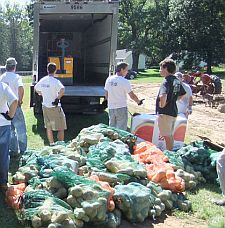
Gleaning is the practice of harvesting remaining or leftover crops in a field after a farmer has harvested what he or she plans to use and sell. This practice of recovering food from farms dates as far back as the Old Testament. Gleaning can be done in large organized groups, which may transport the food to a food bank or other donation center, or it can exist on a more informal basis—for example, when a farmer has a relationship with a neighbor who picks leftover crops for personal use.
Food losses at the farm occur in one of two ways - either the food is never harvested, or it is lost in the process of transporting it from farm to retail. Due to changing market demands and labor shortages, sometimes produce is never harvested and left in the farm fields. Farmers may plant more than they can harvest in order to hedge against potential damage due to disease, pests, and weather. When a field is left unharvested, and is consequently plowed under, it is referred to as a “walk-by.”
Efforts to recover “walk-by” food from farms can reduce the amount of food that is plowed under, and give the food to people in need. Interested in getting involved in gleaning? Contact your local food bank, Foodshare, or the Connecticut Food Bank.
- Neighborhood Fruit allows users to both share and find fruit, vegetables and herbs, including the ability to register fruit trees on public ground or on your own property.
- Let’s Glean Toolkit (USDA)
- Harvest for Hunger (University of Maine Cooperative Extension)
|
Do gleaners come to you farm? Do you provide gleaning services or know of organizations that do? Please let us know bytaking ourGleaning in CT Survey now. |
Additional Resources
Webinars
- Decreasing Wasted Food in Connecticut (Solid Waste Advisory Committee Meeting - April 26, 2016)
- Food Waste Reduction And Management Webinars (Sustainable Materials Management Web Academy, EPA. There are several webinars on food waste reduction and management - search for "food waste.")
- Food - Why We Waste Too Much (Webinar, EPA Region 10)
- Preventing Food Waste with Source Reduction: Lessons Learned and Best Management Practices (Webinar, EPA Region 10)
- LeanPath Free On-Demand and Live Web Seminars - LeanPath has produced many excellent webinars on various food waste prevention topics specifically for the food industry. Most run under 30 minutes.
- Sustainable Food Management: Food - Too Good To Waste (Webinar, EPA)
Guides and Toolkits
- Food Waste Assessment Tools The first step in reducing waste is to measure and track the amount, type of, and the source of food and packaging waste. The food waste & packaging prevention tool, cost estimator, and tracking log provided in this toolkit can help you perform a waste audit to gain critical information for making meaningful changes. (EPA)
- Food Too Good To Waste: A Toolkit to Reduce Household Food Waste The average family could save over $30/week ($1600 a year) by using this toolkit. When we throw away food, we’re also wasting all the water, energy and other resources used to produce, package and transport food to our plates. (EPA Region 10; West Coast Climate and Materials Management Forum)
- Sustainability Guidelines A comprehensive set of guidelines for members of the Connecticut Food Association to increase their sustainability and lower their environmental impact in the communities in which they serve. (CT Food Association, 2012)
Studies, Case Studies & Reports
- Harvard University Presentation at DEEP SWAC Meeting
- New England Food Policy: Building a Sustainable Food System (American Farmland Trust, Conservation Law Foundation, Northeast Sustainable Agriculture Working Group, March 2014)
- Community Food Security in Connecticut (UCONN Study, 2012)
- Don’t Throw Away That Food: Strategies for Record-Setting Waste Reduction (EPA)
Broadcasts, Videos & Films
- Expired? Food Waste in America
- Start-ups, Organizations Take on America's Food Waste Challenge (PBS Newshour 1/26/14 8:49 min)
- Just Eat It. A documentary that explores food waste from farm to fridge.
- Inglorious Fruits and Vegetables An ingenious idea that a French supermarket chain implemented to keep food from going to waste.
- A Recipe for Cutting Food Waste (You Tube, Ted Talk by Peter Lehner of the Natural Resources Defense Council, 14:37 min.)
- Food Rescue Program: Thurston County, Washington (You Tube, 7:05 min.)
- Love Letter to Food (You Tube, 3:22 min.)
- Wasted A two-part short film on the vexing global problem of food waste (Yale Environment 360; 10:00 - 12:00 min each).
Articles, Papers and Books
- American Wasteland: How American Throws Away Nearly Half of Its Food (And What We Can Do About It) (Book by Jonathan Bloom, 2010)
- Wasted: How America is Losing Up to 40 Percent of Its Food from Farm to Fork to Landfill (NRDC Issue Paper, Aug. 2012)
- Probing Question: Why Do We Waste So Much Food? (Penn State News, March 2013)
- The Stop Food Waste Movement (Food Service Consultants Society International, 2013 Article by Andrew Shackman, CEO LeanPath)
- What is Waste Food? (BioCycle article, August 2013)
- Tightening the Belt by Reducing Food Waste (BioCycle Article, November 2012)
Websites
- Food Waste Reduction and Prevention (EPA)
- Stop Food Waste (Cork Institute of Technology, Ireland)
- Composting and Organics Recycling (CT DEEP)
- Love Food, Hate Waste Has lots of tips for meal planning, recipes, and ways to limit your food waste.
- Think. Eat. Save. A one-stop shop for news and resources. Campaign of the Safe Food Initiative, a global partnership.
Organizations
- CT Food System Alliance - We are committed to growing our network and sub-networks, representing all sectors of the food system and finding new ways to strengthen network connections.
- Spoiler Alert - A technology company that helps organizations manage unsold food inventory.
- Sustainable America - Currently offer programs for corporations to become more efficient by reducing food waste and members and members of faith-based communities to reduce food waste at home.
- Center for EcoTechnology - Provides technical assistance to business, including grocery stores and food waste generators to reduce, reuse and recover for composting and/or anaerobic digestion.
- Feeding America, U.S. network of food banks.
Apps
- Leftover Swap Helps you give your leftovers to someone who needs them.
- FridgePal Helps you make shopping lists, track expiration dates and search for recipes for your week's ingredients to make better use of them. It's made for meal planning so you can utilize the best food at the right time.
- Food Rescue US App available to volunteers only who are interested in recovery food and delivering it to pantries, shelters etc. in Connecticut.
Other
- Reuseit Storage containers for waste free lunches.
Disclaimer: The Connecticut Department of Energy and Environmental Protection (DEEP) maintains the content on this web site to enhance public access to information and facilitate understanding of waste reduction, reuse and recycling. The DEEP is not recommending these resources over any others and recognizes these represent only a partial listing of resources on this subject.
Content Last Updated November 2024.

